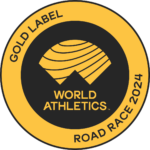Fluid Intake
There will be weighing machines at the starting point to control your fluid intake during running in Istanbul Marathon. If you wish, you can measure your weight before the race and note it on your chest number. In this way, evaluating changes in your weight at the end of the race will give you an idea about restoring your fluid and mineral balance and will help the health teams in the differential diagnosis of your symptoms if you have health problems.
Both water and sodium are lost as a result of sweating in marathons. You should avoid overhydration, which means excessive water intake, during running in marathons. This situation creates a risk of dilutional hyponatremia with the decrease of salt concentration in the body. Salt tablets will also be placed at the water stations for balanced replacement during running. On the other hand, being dehydrated increases the risk of decreased sweating and heat stroke (hyperthermia). For this reason, tracking your weight at the beginning and end of the marathon gives you an idea of how you manage fluid and salt replacement.
The WBGT index (Wet-Bulb Globe Temperature) is an international unit of measurement that processes data, such as temperature, humidity, wind speed and radiation from the sun into a single value. Colors of the flags showing the WBGT index on the side of the track will help you adjust your fluid intake.
In Istanbul Marathon, there are stations at 3-5 km intervals depending on the weather conditions. Since there will be water at these stations, you will not have to carry water. However, some runners may have water bottles they carry in their hands or in waist belts to stop at stations less. Whichever method you choose, don’t forget to try it in your workouts.
You can try a few different methods as these stations will not be available during long run in training.
- Carrying water bottles in your hand or on your waist belt
- Running your long runs on a racecourse that passes the same place several times and leaving water in certain parts of these racecourse before.
- Doing your long runs on a racecourse with natural water sources or markets.
Nutrition Intake
Most of the energy required for a long-term physical activity such as running a marathon is provided by glycogen, which is obtained by the storage of carbohydrates. The body stores a certain part of glycogen in the muscles and liver, but as the distance increases, this energy will be consumed and insufficient to maintain running. This creates what marathon runners call “hitting a wall”. Since the muscles cannot be provided with sufficient energy, you start to have difficulty while running. Therefore, in order to reverse this situation, you need to take small amounts of carbohydrates at regular intervals during the race.
Foods that are easy to eat and digest while running are preferred. Energy gels or fruits such as bananas and date fruit can be preferred. For runs that last longer than two hours, you can intake for about 60g of carbohydrates per hour. Similarly, you will not have any surprises on the race day by providing the needs of your body if you have also experienced nutrition intake in training.
One of the most basic rules on race day is not to try for the first time something you haven’t done before. Make sure you’ve tried everything on your previous workouts, from your shoes to your shorts and to the food you eat. One of the biggest benefits of long runs during the training period is to make the right choices for the marathon day by testing the materials you will use and the nutrition you will have on the race day.

Before the Race
- In order to get prepared mentally before the race, you may think about the problems that could be encountered in the race. You can plan what you will do in such situations. By this way, it will not be a surprise for you when you experience these situations during the race.
- You should be sure to intake enough fluids in the last few days before the race. Both too much drinking and staying dehydrated are not acceptable. You should keep a fluid balance especially if you’re traveling to another city.
- To estimate your fluid balance, measure your weight with the help of the platform scales left at the starting point and note it under your chest number . In this way, you can estimate your fluid and electrolyte balance at the end of the race. According to weight status, the risk of hyponatremia, hypernatremia and imbalance in body temperature can be considered. This data also helps healthcare teams for differential diagnosis of such problems.
- You can consume carbohydrate-rich foods the day before the race. On the morning of the race, you could have a simple, easy-to-digest carbohydrate-rich breakfast a few hours before the start. Avoid fatty and heavy foods that are difficult to digest.
- You must have learned the points on your body that may be subjected to irritation during training. You should apply petroleum jelly or a similar anti-irritant to these points.
- Do not be late to go to the starting point as you may need to need to use the toilet more with the excitement of the race. There are portable toilets in the starting point of races, but there may be queues if you are late.
- The weather usually warms up later in the races started early. So don’t dress too thick in the morning by checking the weather. It is natural to have a slight chill early in the race. If you don’t want to get cold before the race starts, plastic raincoats that you can throw away when the race starts may be useful for you. Some runners use large garbage bags for the same purpose.
- In many marathons, runners are grouped according to their speed at the starting point. If you are in a group that is suitable for your own pace, it will be easier for you to run at the right pace and you will not hinder others.

During the Race
When you start running with hundreds or thousands of runners at the beginning of the race, it is easy to run fast with the effect of adrenaline. But the biggest mistake done by new runners is to start fast. You should focus on running the first half of the race at a pace that is comfortable to you. If you have reserved your strength in the second half, you’ll have plenty of time to get up to speed.
- Do not neglect fluid and nutrition intake with the excitement of the race. Consume carbohydrates at regular intervals, sticking to your pre-race strategy.
- During the race, there will be WBGT flags on the side of the racecourse. Following the colors of these flags will help you to adjust your fluid intake.
- Being able to consume fluids while running requires experience. You should try this in workouts. When you’re still struggling (avoid aspiration), feel free to stop or walk for a few seconds while you drink.
- The second half of the marathon will be challenging both physically and mentally. It is normal to feel exhausted, especially between 25-38 kilometers. In these moments, think about the sacrifices you have made for months, remember that this is part of the challenge, smile and try to think that every step you got will bring you closer to the finish line.
- You should benefit the energy comes from both those who run with you and those who support runners on the racecourse.
Post-Race Recovery
Race day: After finishing the race, you can consume carbohydrate- and protein-based foods. Don’t forget to consume enough fluids and salt. If your urine is straw yellow, it may mean that you are getting enough fluids. Light walking and short stretches can relax your muscles.
Following Days: Take care to eat a balanced diet and to sleep well. On the days after the race, light and short walks or non-impact activities such as swimming can increase blood circulation and shorten recovery time. Make sure you are fully rested and recovered before you re-start running. It is useful to pay special attention to yourself, as your immune system may be weakened for a few days after the race.
Prof. Dr. Mutlu Vural
Health Director of Istanbul Marathon
Acknowledgements: These informative texts were prepared with the consultation of sports medicine Professor Bülent Bayraktar and ultramarathon runner Aykut Kocabaş.





